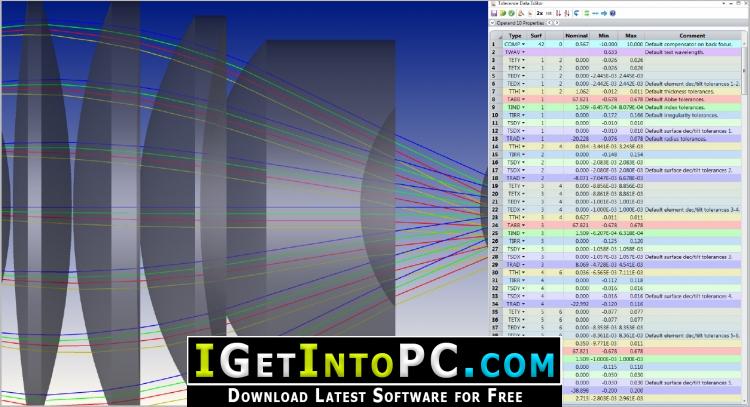

The Filter string syntax consists of logical operations between commands or flags that indicate if the ray has hit, missed, reflected, refracted, scattered, diffracted, or ghost reflected from an object. The Filter string defines a “test” that rays must pass before they are drawn or displayed. We can use Filter strings to analyze just the rays which scatter in the Rectangular Volume and hit the Detector rectangle. If zero, OpticStudio will select a default value for this parameter when drawing missed rays. This parameter is the distance to draw the ray segments that miss all objects. In this example, the "Model" is DLL Defined Scattering, and the selected DLL file is “Henyey-Greenstein-bulk.DLL." This DLL and the corresponding source code are located in the folder "\DLL\BulkScatter." The settings in Object Properties.Volume Physics control what type of bulk scattering model to apply to the Rectangular Volume. This distribution is applied to the volume by specifying a user-defined DLL. This system consists of a Source Ray launching rays at normal incidence to a Rectangular Volume in which the Henyey-Greenstein scattering distribution has been applied. We will now run throuhg an example illustrating the implementation of the Henyey-Greenstein model in OpticStudio. The distribution of power in the Henyey-Greenstein model


The angle θ is defined as the angle of the scattered ray concerning the specular ray θ = 0 degrees refers to scattering along the specular ray in the forward direction, and θ = 180 degrees to scattering along the specular ray in the backward direction. For g = 0, the model describes a material with a uniform probability of scattering at all angles, and as g approaches unity, the distribution becomes highly peaked around θ = 0 degrees. The parameter g characterizes the distribution. In this model, the angular distribution of scattered light is given by: The Henyey-Greenstein model describes the angular distribution of light scattered by small particles. In this post, the "Henyey-Greenstein-bulk.dll" will be used to show the angular and power distribution of the Henyey-Greenstein model. This model has been applied to numerous situations, ranging from the scattering of light by biological tissue (1) to scattering by interstellar dust clouds.(2)Ī user-defined DLL is included with the OpticStudio installation which allows users to apply this bulk scattering model to any non-sequential volume. In the blog post, we will provide a brief overview of the theory behind the model and will show two examples of analysis of a system that is utilizing the DLL. This blog post demonstrates how to use a provided user-defined DLL to model Henyey-Greenstein bulk scattering in Non-Sequential Mode.


 0 kommentar(er)
0 kommentar(er)
